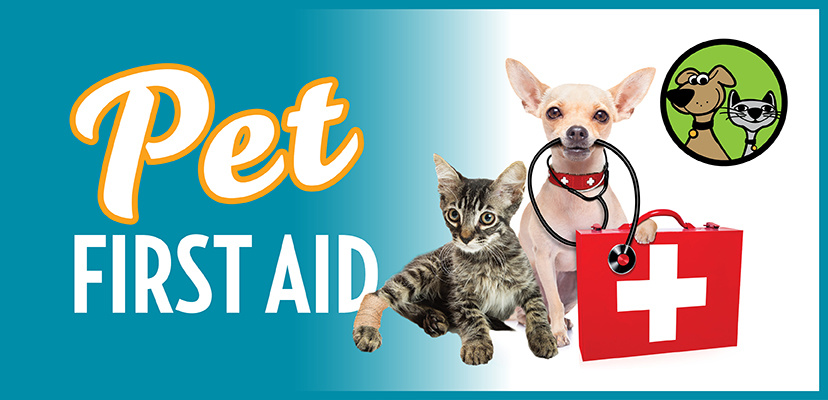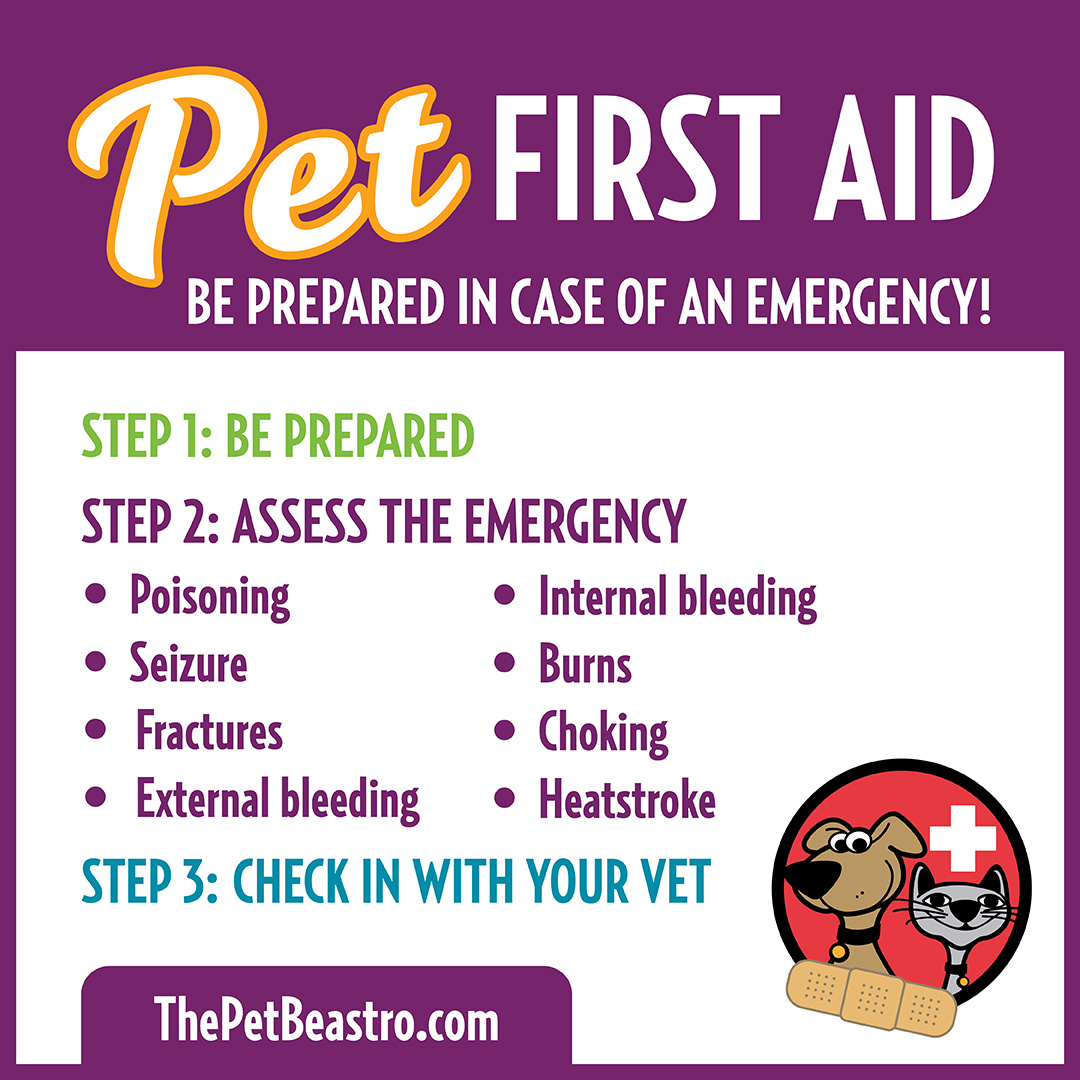First Aid Basics for Your Pet
- Posted on
- By Dr. Jill Tack
- Posted in Common Dog & Cat Health Issues, Dog & Cat Safety Tips, Dog & Cat Wellness
- 0

April is Pet First Aid Awareness Month. Today we’ll be sharing some insight on what you should do for your pet in the case of a medical emergency. It’s difficult and sometimes impossible to predict which injuries or illnesses our pets may come down with, so it’s best to be prepared for any possible ailments that arise.
April is Pet First Aid Awareness Month. Today we’ll be sharing some insight on what you should do for your pet in the case of a medical emergency. It’s difficult and sometimes impossible to predict which injuries or illnesses our pets may come down with, so it’s best to be prepared for any possible ailments that arise.
Step 1: Be Prepared
First things first, make sure you have a designated pet emergency first aid kit. Mercola.com has some great suggestions of what to include. Next, be sure you know how to handle an injured pet. Even if your animal has never shown signs of aggression, you can never be too careful. When in extreme pain, or put under an unusual amount of stress, our animal’s demeanor can change rapidly. The American Veterinary Medical Association has some great pointers for handling injured animals that you can view here.
Step 2: Assess the Emergency
How you deal with your pet’s emergency depends on their injury and/or illness. Here is how The American Veterinary Medical Association suggests you handle the following emergencies:
Poisoning
If your pet's eyes or skin come into contact with a poisonous agent, follow the product's instructions on how to proceed if the same happened to a human. Then, call your vet as soon as possible. If your pet consumed or may have consumed a toxic substance, call your vet or the Animal Poison Control Center hotline (888.426.4435) immediately.
Seizure
If your pet is having a seizure, try to keep him/her from injuring himself/herself on furniture or other objects. But, don't restrain your pet. If you can, time the seizure. Then, call your vet immediately.
Fractures
If your pet breaks a bone, put a muzzle on and transport him/her to the vet on a flat board or stretcher. If you're unsure of how to set the fracture with a splint, don't attempt to do it. You could cause further injury.
External bleeding
If you see that your pet is bleeding, muzzle him/her and then press a sterile gauze pad onto the wound until the blood clots. For severe bleeding on the leg, apply a tourniquet between the wound and body. Profuse blood loss can be very dangerous. Get your pet to the vet as soon as possible.
Internal bleeding
First, know the symptoms of internal bleeding: bleeding from the nose, mouth, rectum, coughing up blood, blood in urine, pale gums, collapse, and weak and rapid pulse. If your pet is exhibiting these systems, try to keep them as quiet as possible and bring them to the vet as soon as possible.
Burns
If your pet has been burned, muzzle him/her immediately. For a chemical burn, flush the burned area with plenty of water. For a severe burn, apply an ice water compress to the area.
Choking
If your pet is choking and can still breathe, take him/her to the vet immediately. If you can see the object in your pet's mouth, you can try to remove it with tweezers. Be VERY careful not to push the object further down the pet's throat. If you can't remove the object or your pet collapses, place both hands on the side of your pet's rib cage and apply firm quick pressure, or lay your pet on its side and strike the rib cage firmly with the palm of your hand 3 to 4 times to sharply push air out of your pet's lungs and push the object out from behind. Keep repeating this until the object is dislodged or until you arrive at the veterinarian's office.
Heatstroke
For heatstroke, move your pet to a shaded area and place a cool wet towel around their neck and head. Rewet the towel every so often to keep it cool. Alternatively, you can pour water over the animal's body (especially the abdomen and between the hind legs), and use your hands to massage its legs and sweep the water away as it absorbs the body heat. Make sure to get your pet to the vet's office as soon as possible.
Step 3: Check-In With Your Vet
After a major medical emergency, always make sure you take your pet to the vet. While there are some things we can do to prepare for such circumstances and treat acute symptoms, without the expertise of a medical professional, you can’t be sure that your pet is truly recovered.
We Are Here To Help
Depending on your pet's situation, our staff may have additional clarifying questions that will help us find the right selection for your pets’ specific first aid needs. If you have further questions, any one of our staff members can help you find the right option for your pets! Visit us at our retail store in Madison Heights, Michigan, or visit our natural pet food, treats, toys, and supply store online to learn more.



Comments
Be the first to comment...